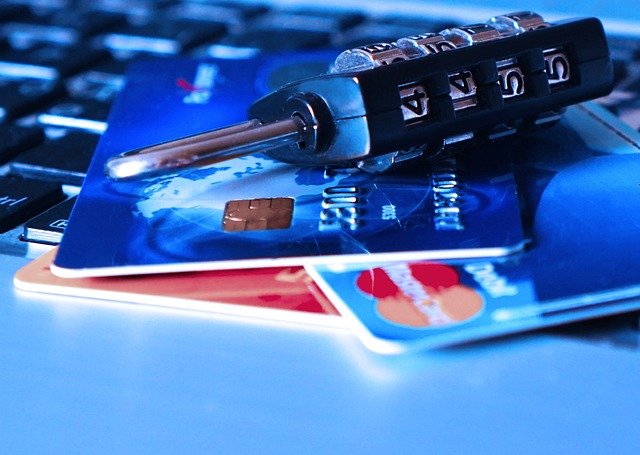The Emergence of Biometric Banking: Redefining Financial Security
In an era where digital convenience often clashes with security concerns, the banking sector is witnessing a paradigm shift. Biometric banking, once a concept confined to science fiction, is now rapidly becoming a reality, promising to revolutionize how we interact with our finances. This cutting-edge technology is not just enhancing security measures; it's transforming the entire banking experience, making it more personalized, efficient, and secure than ever before.

The Evolution of Banking Security
The journey to biometric banking has been a long one, marked by continuous efforts to stay ahead of fraudsters and cyber criminals. From the early days of signature verification to the introduction of PIN codes and chip-and-PIN technology, banks have constantly evolved their security measures. However, these methods have their limitations. PINs can be forgotten or stolen, and even sophisticated encryption can be breached by determined hackers.
Biometrics offers a new level of security by using something that is unique to each individual and cannot be easily replicated or stolen. This shift not only enhances security but also simplifies the user experience, eliminating the need to remember multiple passwords or carry physical tokens.
The Mechanics of Biometric Authentication
At its core, biometric banking relies on the principle that certain physical characteristics are unique to each individual. The process typically involves three key steps:
-
Enrollment: The user’s biometric data is captured and securely stored.
-
Authentication: When a transaction is initiated, the user’s biometric data is captured again.
-
Verification: The captured data is compared to the stored data to confirm the user’s identity.
This process happens in real-time, often within seconds, providing a seamless and secure user experience. Advanced algorithms ensure that the biometric data is accurately matched, minimizing the risk of false positives or negatives.
Applications in Modern Banking
The applications of biometric technology in banking are vast and varied. From ATM withdrawals to mobile banking apps, biometrics is being integrated across various touchpoints:
-
ATM Access: Facial recognition or fingerprint scans are replacing card swipes and PIN entries.
-
Mobile Banking: Fingerprint and facial recognition are becoming standard features in banking apps.
-
Branch Banking: Voice recognition is being used to authenticate customers during phone calls.
-
Payment Systems: Biometric credit cards are emerging, using fingerprints to authorize transactions.
These applications not only enhance security but also streamline processes, reducing transaction times and improving overall efficiency.
The Impact on Financial Inclusion
One of the most promising aspects of biometric banking is its potential to drive financial inclusion. In regions where literacy rates are low or official identification documents are scarce, biometrics can provide a reliable means of identity verification. This opens up banking services to previously underserved populations, potentially bringing millions into the formal financial system.
Several countries, particularly in Africa and Asia, are already leveraging biometric technology to expand access to banking services. For instance, India’s Aadhaar program, which uses biometric data to provide unique identification numbers to citizens, has been instrumental in expanding access to financial services across the country.
Challenges and Considerations
While the potential of biometric banking is immense, it’s not without challenges. Privacy concerns are at the forefront, with critics arguing that the collection and storage of biometric data could lead to unprecedented levels of surveillance. There are also technical challenges to overcome, such as ensuring the accuracy of biometric readings in various environmental conditions.
Moreover, the irreplaceable nature of biometric data raises serious concerns. Unlike a password that can be changed if compromised, an individual’s biometric data is permanent. A breach of this data could have lifelong consequences for affected individuals.
Regulatory Landscape
As biometric banking gains traction, regulators are scrambling to keep pace. The European Union’s General Data Protection Regulation (GDPR) classifies biometric data as sensitive personal data, subject to stringent protection requirements. In the United States, several states have enacted biometric privacy laws, with Illinois’ Biometric Information Privacy Act (BIPA) being one of the most comprehensive.
These regulations aim to ensure that financial institutions implement robust security measures to protect biometric data and obtain explicit consent from users before collecting such data. As the technology evolves, we can expect to see more comprehensive and globally harmonized regulatory frameworks emerge.
Future Prospects
The future of biometric banking looks promising, with ongoing research and development pushing the boundaries of what’s possible. Some emerging trends include:
-
Behavioral Biometrics: Analyzing patterns in how users interact with their devices.
-
Multimodal Biometrics: Combining multiple biometric factors for enhanced security.
-
Continuous Authentication: Constantly verifying a user’s identity throughout a session.
As these technologies mature, we can expect to see even more seamless and secure banking experiences, potentially eliminating the need for traditional authentication methods altogether.
Practical Insights for Navigating Biometric Banking
-
Familiarize yourself with your bank’s biometric options and security measures
-
Be cautious about where and how you use biometric authentication
-
Regularly update your devices to ensure you have the latest security features
-
Consider using multi-factor authentication for added security
-
Stay informed about your rights regarding the collection and use of your biometric data
-
Be prepared for a transition period as biometric systems are implemented and refined
As we stand on the cusp of this biometric revolution in banking, it’s clear that the financial landscape is set for a profound transformation. While challenges remain, the potential benefits in terms of security, convenience, and financial inclusion are immense. As consumers, staying informed and adapting to these changes will be crucial in navigating the evolving world of finance. The future of banking is here, and it’s written in our fingerprints, faces, and voices.





